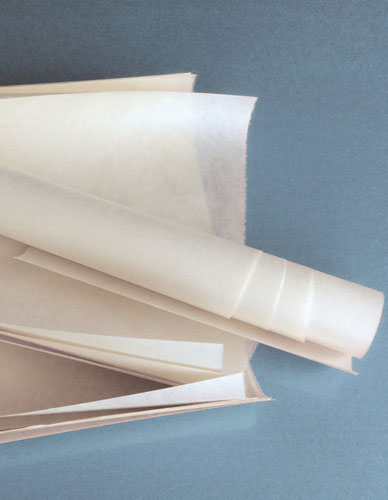• Globally recognized for its high quality
• A must-have for restorers for its strength, texture and flexibility
• Made in Japan
Japanese papers are mainly used for the restoration of documents, in particular for the doubling and repair of graphic works (filling of gaps, consolidation of tears) or for the installation of false margins intended to power a document. - Kozo is used in Japan paper manufacturing and accounts for nearly 80% of all paper production used in catering. Cultivated annually, Kozo is made of long fibers (10 mm on average) which usually gives strong and resistant papers. - Mitsumata and Gampi are rarer plant essences. Mitsumata usually produces shiny, denser, noisy paper when creased, while Gampi produces fine, clear, and rather glossy papers. Depending on the fiber treatment, the choice of the preferred plant species and the production itself, these characteristics may vary and the papers differ in color (off-white, golden, light yellow, cream, etc.) that of the thickness or the texture. In order to facilitate your choice, we propose a sample chart on request to 26.30 € HT, refundable to the first order> 300 € HTFor any particular request, possibility of manufacture custom made direct from Japan: consult us.
Features: Japanese papers for preventive and curative preservation are of excellent quality and traditionally handmade. Cellulosic fibers made from the wood of certain shrub varieties, the Washi (wa: "Japanese", shi: "paper") are mainly produced from mulberry tree species.The most commonly used fibers are Kozo, Mitsumata and the Gampi.



